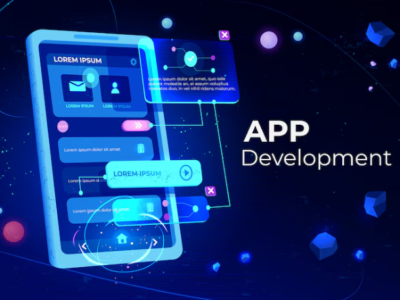
In the dynamic realm of mobile app development, building high-quality Android App Development requires adherence to best practices that ensure optimal performance, usability, and security. From design considerations to coding standards, every aspect of the development process plays a crucial role in shaping the success of an app. In this article, we delve into essential tips and strategies for developers to follow when striving to create top-notch Android applications.
Also Read: How To Increase Ecommerce Sales?
- Prioritize User-Centric Design
User-centric design lies at the heart of building successful Android applications. Prioritize simplicity, intuitiveness, and consistency in the app’s design to enhance user experience. Conduct thorough user research and gather feedback to understand user preferences and pain points, allowing you to tailor the app’s interface and features accordingly. Utilize design principles such as Material Design guidelines provided by Google to ensure a cohesive and visually appealing user experience.
- Optimize Performance and Responsiveness
Optimizing app performance and responsiveness is critical for retaining users and maximizing engagement. Minimize app loading times, reduce memory usage, and optimize resource-intensive tasks to ensure smooth performance across various devices and network conditions. Utilize tools like Android Profiler to identify performance bottlenecks and optimize code accordingly. Additionally, leverage techniques such as lazy loading and caching to enhance app responsiveness and improve user satisfaction.
- Ensure Compatibility Across Devices and Versions
With the vast diversity of Android devices and operating system versions in the market, ensuring compatibility is paramount. Adopt responsive design principles and thoroughly test the app across a range of devices, screen sizes, and resolutions to ensure consistent functionality and visual appeal. Stay updated with the latest Android SDK versions and platform changes to leverage new features and maintain compatibility with evolving standards.
- Implement Robust Security Measures
Security is a fundamental aspect of Android app development, especially considering the sensitive data often handled by mobile applications. Implement robust security measures such as data encryption, secure authentication mechanisms, and secure transmission protocols to safeguard user data and protect against potential threats. Regularly update libraries and dependencies to address security vulnerabilities and adhere to industry best practices for secure coding.
- Focus on App Stability and Reliability
App stability and reliability are essential for retaining users and building trust in your application. Conduct rigorous testing, including functional testing, usability testing, and performance testing, to identify and address any bugs or issues before releasing the app to users. Utilize automated testing frameworks like Espresso or Robolectric to streamline the testing process and ensure consistent app behavior across different scenarios and devices.
- Leverage Custom Android App Development Services
Partnering with Custom Android App Development Services can provide invaluable expertise and resources to streamline the app development process and ensure high-quality results. These services offer tailored solutions that cater to the specific requirements and objectives of your project, leveraging cutting-edge technologies and industry best practices to create exceptional Android applications. From initial ideation to deployment and maintenance, custom development services can help you navigate every stage of the app development lifecycle with confidence.
- Embrace Continuous Improvement and Iteration
Android app development is an iterative process that requires ongoing refinement and improvement. Embrace user feedback and analytics data to identify areas for enhancement and prioritize feature updates accordingly. Adopt agile development methodologies such as Scrum or Kanban to facilitate collaboration, adaptability, and continuous delivery of value to users. By embracing a culture of continuous improvement, you can ensure that your app remains relevant, competitive, and successful in the ever-evolving mobile landscape.
Conclusion:
Adhering to best practices is essential for building high-quality Android applications that deliver exceptional user experiences and drive business success. By prioritizing user-centric design, optimizing performance, ensuring compatibility, implementing robust security measures, and leveraging custom Android app development services, developers can create apps that stand out in the competitive app market. By following these tips and strategies, you can navigate the complexities of Android app development with confidence and create impactful apps that resonate with users and achieve your business objectives.










